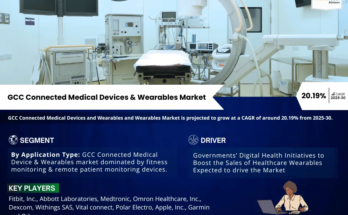[206 Pages Report] Increasing adoption of dosimeters at various healthcare centers would push the global dosimetry market revenues beyond a value of US$ 4 Bn by 2029, as projected by a new Future Market Insights (FMI) report.
Strict government regulations regarding radiation toxicity levels, growing awareness about the harmful effect of radiation, and rising concerns about the health of employees working in environments with radiation exposure have prompted the use of dosimetry.
Rising adoption of radiopharmaceuticals used for diagnostic purposes can increase the radiation levels in hospitals. This has, in turn, increased the risk of radiation-related diseases among healthcare professionals. There has been a rise in the adoption of wearable dosimeters by hospitals to analyse radiation levels among their staff, which has created opportunity for the growth of the dosimetry market.
To remain ahead of your competitors, request for a sample – https://www.futuremarketinsights.com/reports/sample/rep-gb-3482
“Rise in the install base of internal radiation therapy machines in the past decade has necessitated the need for active dosimeters for real-time monitoring of radiation exposure of hospital staff”, says an FMI analyst.
Key Takeaways from Dosimetry Market Study
- The adoption of personal electronic dosimeters for real-time monitoring is expected to gain traction, and contribute more than 60% of revenue share during the forecast period.
- Growing adoption of wearable dosimeters by hospital professionals to analyse radiation levels is expected to contribute to the significant revenue share of the segment.
- Passive dosimeters dominate the market by energy, as these are relatively cheaper than active dosimeters.
- In terms of end user, industrial and medical are expected to collectively gain more than 40% of market share during the forecast period.
- North America is the leading market, while the dosimetry market in South Asia is expected to grow at significant rate, owing to increasing healthcare infrastructure and industrialization.
Acquisition Key Strategy Followed by Leading Manufacturers
Leading manufacturers in the dosimetry market are focusing on the acquisition strategy to enhance their product portfolio and expand their regional presence. For instance, in 2017, Fortive acquired Landauer, a leading global provider of subscription-based technical and analytical services to determine occupational and environmental radiation exposure.
In 2016, Mirion Technologies Inc. acquired Canberra Industries. Mirion’s acquisition of Canberra brings together two of the most respected and experienced industry players, and offers comprehensive and compelling solutions for the global customer base.
Want more insights on the dosimetry market?
A new study by Future Market Insights opines on the evolution of the dosimetry market from 2014-2021, and presents demand projections for 2022-2029, on the basis of product (personal electronic dosimeters, self-reading dosimeters, processed dosimeters), modality (wearable and non-wearable), energy (active dosimeters and passive dosimeters), and end user (industrial, medical, oil and gas, defence, homeland security, mining, environmental, others), across seven prominent regions.
Get a Tailored Made Report to Match Your requirements, Ask from Market Research Expert – https://www.futuremarketinsights.com/ask-question/rep-gb-3482
Dosimetry Market by Category
By Product Type :
- Personal Electronic Dosimeter
- Self-reading Dosimeters
- Processed Dosimeters
By Modality :
- Wearable
- Collar level
- Chest level
- Waist level
- Wrist level
- Finger level
- Non-wearable
By Energy :
- Active Dosimeters
- Passive Dosimeters
- Optically Stimulated Luminescence Dosimeter (OSLD)
- Thermoluminescence Dosimeters (TLD)
- Radiophotoluminescence (RPL)
By End User :
- Industrial
- Medical
- Oil and Gas
- Defense, Homeland Security
- Mining
- Environmental
- Others
For in-depth competitive analysis, Buy Now – https://www.futuremarketinsights.com/checkout/3482
By Region :
- North America
- Latin America
- Europe
- South Asia
- East Asia
- Oceania
- Middle-East & Africa


